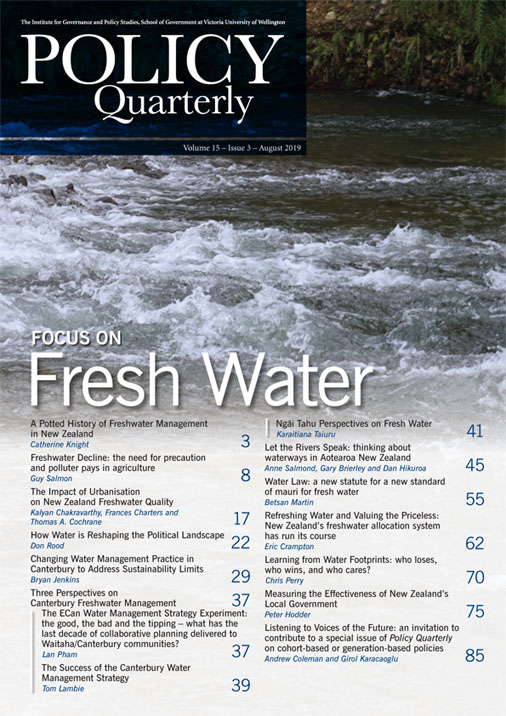The Impact of Urbanisation on New Zealand Freshwater Quality
DOI:
https://doi.org/10.26686/pq.v15i3.5683Keywords:
storm water, impervious coverage, overflows, water sensitive urban design, source controlAbstract
Urban waterways represent less than 1% of the total river length in New Zealand. However, they are the most visible of all rivers, as 86% of New Zealanders live in urban areas. Urban waterways are impaired due to elevated levels of pathogens, turbidity, nutrients and heavy metals originating from anthropogenic activities. In addition to being conduits of storm water run-off from urban areas, some urban waterways also receive discharges from wastewater treatment plants and combined sewage overflows, thus greatly reducing their capacity to provide ecosystem services such as recreation, tourism, biodiversity and mahinga kai. This article summarises the state of New Zealand’s urban freshwater quality, the major drivers of pollution, and mitigation measures needed to restore urban waterways.
Downloads
Downloads
Published
Issue
Section
License
Permission: In the interest of promoting debate and wider dissemination, the IGPS encourages use of all or part of the articles appearing in PQ, where there is no element of commercial gain. Appropriate acknowledgement of both author and source should be made in all cases. Please direct requests for permission to reprint articles from this publication to Policy-Quarterly@vuw.ac.nz.



